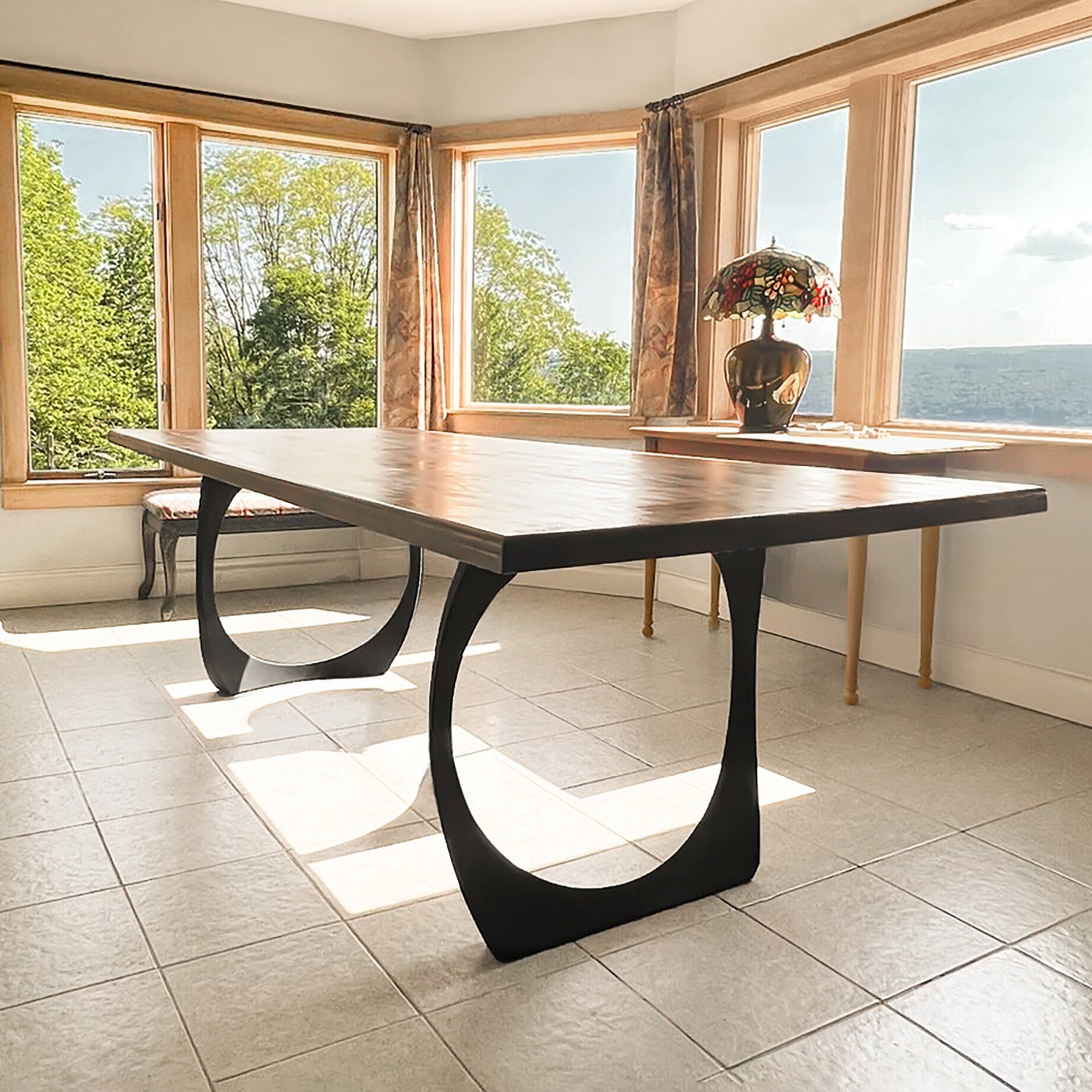A Thorough Appearance at Dining Table Leg Styles: Finding the Ideal Suit
Selecting the best eating table leg style is essential for both visual charm and practical functionality. For those with bigger tables, trestle legs guarantee strong support, whereas barrette legs present a mid-century contemporary ambiance with their minimalist style. The x-shaped legs mix modern design with boosted security.
Typical Four Legs
Among the numerous kinds of table leg designs, the typical four-leg style remains an ageless option for several households. This traditional configuration uses a harmonious blend of functionality and aesthetics, making it a perennial favorite. Four legs give balanced support, ensuring the table remains steady and with the ability of birthing substantial weight. This is especially beneficial for families that regularly host large events or utilize their dining table for numerous functions, such as job or crafting.
From an aesthetic perspective, the traditional four-leg design can be quickly adjusted to different indoor designs. Whether crafted from timber, steel, or a mix of products, these legs can be delicately sculpted, sleek and minimalistic, or anything in between. Their versatility permits them to match both rustic and modern setups flawlessly.
In addition, the straightforward structure of the four-leg style facilitates convenience of movement and placement within a space. Unlike even more facility bases, this style minimizes obstructions, providing sufficient legroom for restaurants. In summary, the conventional four-leg table leg design marries sustaining elegance with practical performance, making it a sharp option for those looking for both kind and function in their dining furnishings.
Stand Base
Commonly commemorated for its elegant and space-efficient layout, the stand base is a distinguished option to the typical four-leg setup in table leg styles. This distinct base typically features a solitary central column supporting the table top, which can differ in type, from ornately carved wood to sleek, modern-day metal. One of the key advantages of the stand base is its capacity to take full advantage of legroom and seating flexibility. Without corner legs, restaurants are paid for better liberty of movement, making it an optimal option for round and oblong tables that advertise more intimate and inclusive events.
In addition, the pedestal base's central support can handle significant weight, enabling using much heavier tabletops, such as marble or thick hardwood. This toughness paired with its aesthetic convenience makes the stand base a preferred selection in both traditional and contemporary indoor setups. It can flawlessly incorporate with different design themes, from timeless elegance to minimalist modernity. The central column itself offers a canvas for complex layouts and imaginative expressions, including an element of aesthetic interest below the table. In summary, the pedestal base integrates functionality snappy, making it a refined and practical alternative for varied dining environments.
Trestle Legs
Trestle legs offer a durable and classic structure for dining tables, characterized by their straight cross-bracing and sturdy assistance beam of lights. Stemming from medieval times, this style has evolved yet kept its important framework, making it a perennial favorite in both traditional and contemporary setups. The central trestle light beam, typically supported by 2 or more upright messages, supplies remarkable security, permitting for bigger table sizes without the demand for additional legs.
A significant advantage of trestle leg tables is the adequate legroom they supply. Unlike tables with four edge legs, the lack of obstructions at the table's sides gives unobstructed room for chairs and diners, boosting convenience and accessibility. This makes trestle tables optimal for accommodating bigger celebrations, whether in a dining-room or a reception hall.
From rustic farmhouse to streamlined modern styles, trestle legs can be customized to match individual preferences. Their enduring appeal and practical benefits make trestle legs a compelling selection for those seeking both style and practicality in their dining table.
Hairpin Legs

The appeal of barrette legs hinges on their simpleness and adaptability - dining room table legs. Available in an array of products, consisting go right here of steel and brass, they can be completed in numerous shades to match different indoor styles. Whether coupled with a rustic wood table top or a modern glass surface, hairpin legs effortlessly mix performance with a touch of vintage charm
Toughness is one more significant function of barrette legs. In spite of their fragile look, these legs are crafted to bear significant weight, guaranteeing the dining table continues to be secure and safe. Additionally, they are fairly very easy to set up, making them a prominent option for DIY lovers and expert furniture manufacturers alike.
X-Shaped Legs

Built from products such as steel, timber, or a combination of both, X-shaped legs can be tailored to match various design preferences. Steel legs typically lend a streamlined and commercial feeling, ideal for loft-style houses and modern dining spaces. On the various other hand, wooden X-shaped legs provide a warmer, a lot more rustic appeal, suitable for farmhouse or eclectic interiors. The versatility in materials enables house owners to tailor their table to much better fit their overall style plan.
In addition, the design behind X-shaped legs makes sure even weight distribution, reducing the threat of tottering and boosting resilience. This makes them particularly well-suited for bigger site here eating tables that require added support. Fundamentally, X-shaped legs mix useful design with modern aesthetics, making them an ageless choice for varied dining settings.
Conclusion
A comprehensive understanding of eating table leg designs reveals the unique features and benefits of each style. Trestle legs make certain durable assistance for bigger tables, and hairpin legs introduce a mid-century modern-day aesthetic.